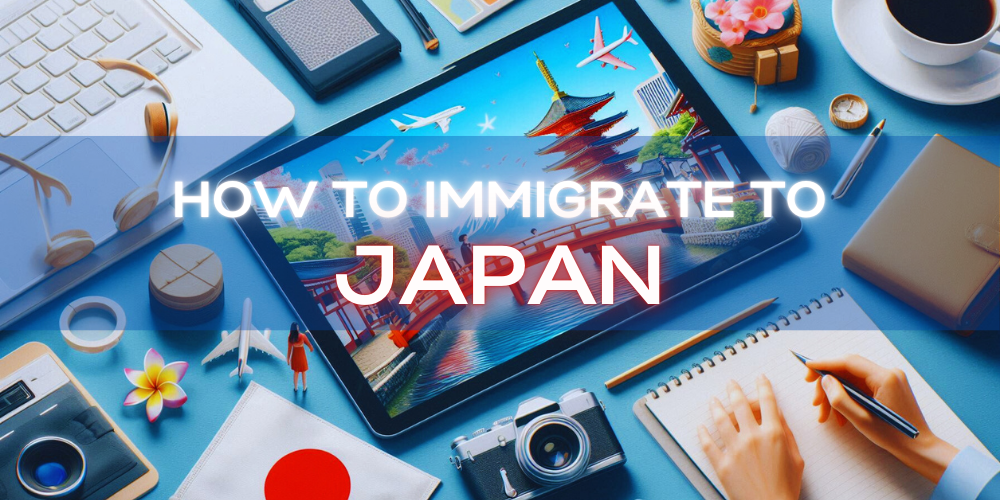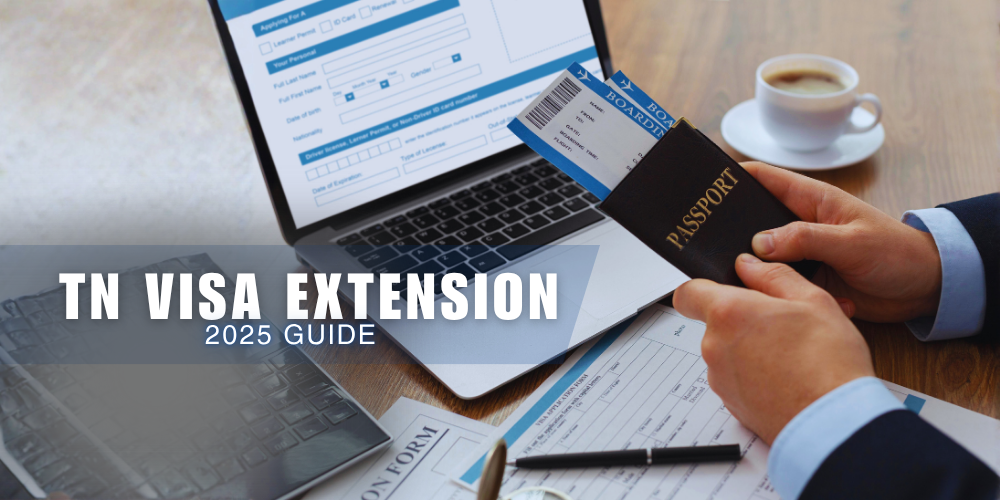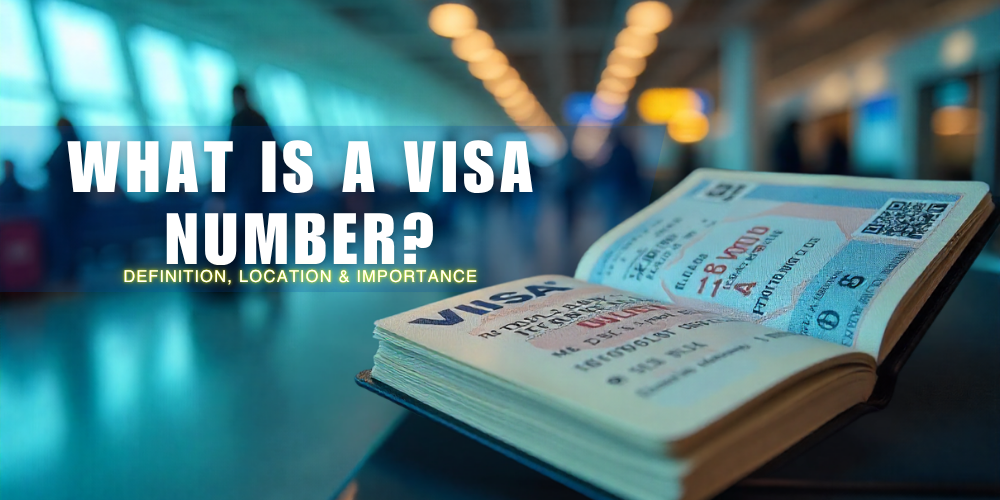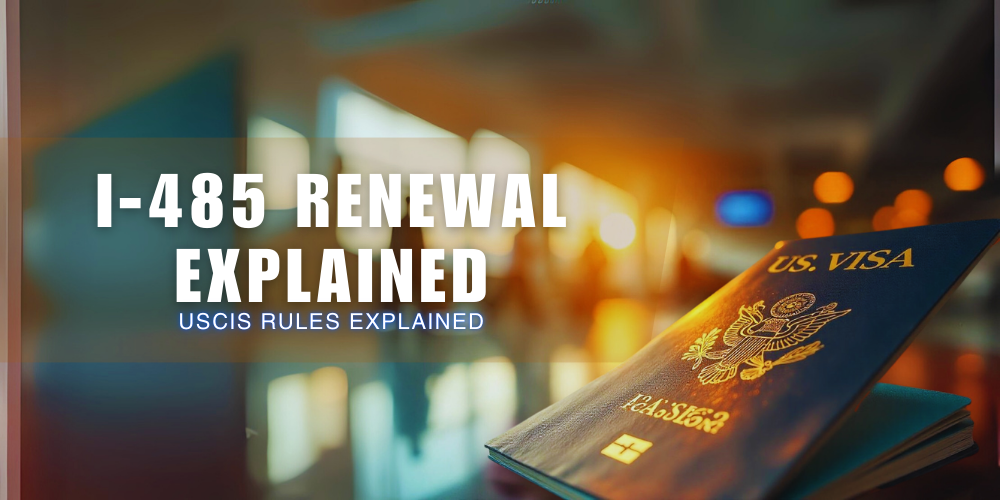--------- How to Immigrate to Japan: Step-by-Step Guide
Jan 24, 2025

Whether it’s the allure of Japan’s ancient traditions, the innovative modern lifestyle, or the prospect of advancing your career, immigrating to Japan offers an unparalleled opportunity to experience one of the world’s most fascinating cultures.
But making the move to Japan isn’t as simple as packing your bags and hopping on a plane. It’s a detailed process that requires careful planning, an understanding of the visa system, and a willingness to adapt to a new way of life. In this guide, we’ll break down every step of the process to help you navigate the path to immigrating to Japan with confidence and clarity. Ready to get started? Let’s dive in!
Step 1: Understand Japan’s Visa System
The first step in immigrating to Japan is determining which visa suits your purpose of stay. Japan offers a variety of visa types depending on your goals, such as working, studying, or joining the family.
Types of Japanese Visas
1. Work Visa
- For Professionals: This category includes engineers, IT specialists, researchers, and teachers.
- Key Requirements: You’ll need a job offer from a Japanese company or institution willing to sponsor your visa.
- Duration: Usually 1–5 years, renewable.
2. Student Visa
- For Students: Ideal for those enrolling in Japanese language schools, universities, or vocational programs.
- Key Requirements: Admission letter from a recognized institution and proof of financial support.
3. Spouse or Family Visa
- For Family Members: If you’re married to a Japanese citizen or permanent resident, or you’re joining a family member, this visa allows you to live in Japan.
4. Highly Skilled Professional Visa
- For Specialists: Tailored for professionals with exceptional skills in fields like academia, business management, or technology. This visa offers fast-track permanent residency.
5. Permanent Resident Visa
- For Long-Term Residents: Achievable after living in Japan for a certain number of years (typically 10 years, or less for specific categories).
6. Specified Skills Visa
- For Skilled Workers: Designed for workers in industries facing labor shortages, like construction, healthcare, or hospitality.
Actionable Tip: Visit the Japan Immigration Services Agency website to explore all visa categories and their specific requirements.
Step 2: Secure a Visa Sponsor
Most Japanese visas require a sponsor—an employer, educational institution, or family member based in Japan. Here’s how to secure one:
1. For Work Visa Applicants
- Search for Jobs: Use platforms like GaijinPot, JobsinJapan.com, and LinkedIn to find opportunities in Japan.
- Networking: Join online forums, attend job fairs, and connect with Japanese companies directly.
- Prepare for Interviews: Highlight your skills, qualifications, and willingness to adapt to Japanese work culture.
2. For Students
- Apply to language schools, universities, or vocational institutions that are accredited by the Japanese government.
- Once accepted, the institution will provide you with a Certificate of Eligibility (COE), which you’ll need to apply for your visa.
3. For Family Visa Applicants
- If joining a family member, they’ll need to submit proof of their residency or citizenship and financial support documents.
Step 3: Apply for a Certificate of Eligibility (COE)
The Certificate of Eligibility (COE) is a vital document issued by the Japanese Immigration Bureau. It confirms that you meet the criteria for your visa type and is required before you can apply for a visa.
Steps to Obtain a COE:
- Submit Documents to Your Sponsor:
- Passport copy.
- Resume or academic history.
- Financial documents (e.g., bank statements or sponsor’s income proof).
- Sponsor Submits COE Application:
Your sponsor will file the COE application on your behalf with the Immigration Bureau in Japan. - Wait for Approval:
Processing time is typically 1–3 months. Once approved, the COE will be sent to you by your sponsor.
Step 4: Apply for Your Visa
With your COE in hand, you can apply for a visa at your nearest Japanese embassy or consulate.
Visa Application Checklist:
- Valid Passport
- Completed Visa Application Form (downloadable from the embassy website)
- Passport-Sized Photos
- Certificate of Eligibility (COE)
- Additional Documents: May include proof of accommodation, financial statements, or a detailed travel itinerary.
Visa Fees:
Fees vary depending on your country of origin, but most range from $30–$50 USD.
Pro Tip: Visa processing usually takes 5–10 business days, so plan accordingly.
Step 5: Prepare for Your Arrival in Japan
With your visa secured, it’s time to prepare for your move to Japan. Here’s what to focus on:
1. Housing
- Temporary Accommodation: Start with short-term rentals or hotels while you search for a permanent residence.
- Long-Term Housing: Work with real estate agents specializing in expat housing. Websites like Suumo and Homes.co.jp are great resources.
2. Financial Preparation
- Open an international bank account or confirm your bank’s partnership with Japanese institutions for seamless transfers.
- Bring enough cash for the first few weeks, as Japan is still a cash-heavy society.
3. Health Insurance
Enroll in the National Health Insurance (NHI) upon arrival. This system covers a significant portion of medical costs and is mandatory for residents.
Step 6: Arrive and Register in Japan
1. Resident Registration
Within 14 days of arriving, visit your local city hall to:
- Register your address.
- Receive your Residence Card (if not already issued at the airport).
2. Open a Bank Account
- Required Documents: Residence Card, passport, and proof of address.
- Major Banks: MUFG, SMBC, and Japan Post Bank.
3. Obtain a Mobile Phone
Choose a service provider like SoftBank, NTT Docomo, or Rakuten Mobile. Ensure your phone is unlocked for use with Japanese carriers.
Step 7: Embrace Japanese Culture
Moving to Japan isn’t just about logistics—it’s about adapting to a new culture and lifestyle.
1. Learn Basic Japanese
While many urban areas have English speakers, basic Japanese goes a long way in daily interactions. Apps like Duolingo or taking a local language class can help.
2. Understand Etiquette
- Bow Respectfully: Bowing is a common greeting and sign of respect.
- Remove Shoes: Always take off your shoes before entering a Japanese home or certain establishments.
- Quiet Public Behavior: Keep your voice low in public spaces, especially on trains.
3. Explore Your New Home
Japan is a country of contrasts—modern skyscrapers sit alongside ancient temples. Take time to explore landmarks like:
- Tokyo’s bustling Shibuya Crossing.
- Kyoto’s historic Fushimi Inari Shrine.
- Hiroshima’s Peace Memorial Park.
Step 8: Long-Term Residency and Permanent Settlement
If you plan to stay in Japan for the long haul, consider applying for permanent residency.
Requirements for Permanent Residency:
- Continuous residency in Japan for at least 10 years (exceptions exist for highly skilled professionals and spouses of Japanese citizens).
- Demonstrate financial stability and good conduct.
Common Challenges and How to Overcome Them
1. Language Barrier
Invest in language learning early and don’t hesitate to use translation apps when needed.
2. High Cost of Living
Budget carefully, especially in cities like Tokyo and Osaka. Look for cost-effective housing and dining options.
3. Adapting to Work Culture
Japanese work culture emphasizes punctuality, teamwork, and hierarchy. Be respectful and open to learning these nuances.
Final Thoughts: Your New Life in Japan
Immigrating to Japan is a significant decision, but with the right preparation, it can be one of the most rewarding experiences of your life. From securing the right visa to embracing cultural differences, this step-by-step guide equips you with the tools to make your transition seamless.
Japan is a land of opportunity, offering a unique blend of tradition and modernity that few countries can match. With careful planning and an open mind, you’ll be well on your way to building a new life in one of the world’s most captivating nations.
Are you ready to leap? Start planning today, and let Japan’s vibrant culture, history, and innovation welcome you with open arms!
Recent Articles

How Long Does a TN Visa Extension Take in 2025?
Time — it’s the one thing every TN professional learns to respect. Whether you’re an engi

The Easiest Countries to Get Citizenship in 2025: Fast Tracks, Smart Moves, and Hidden Shortcuts
In 2025, the idea of belonging to just one nation feels almost quaint. As the world continues to shr

U.S. Citizenship Made Simple: Eligibility, Process, and Requirements Explained
For many, U.S. citizenship is more than just a passport—it’s a gateway to stability, opportunity

What Is a Visa Number? Definition, Location & Importance
Look closely at your U.S. visa and you’ll notice a small red number tucked away in the corner. Eas

I-485 Renewal Explained: Why You Can’t Renew Form I-485 (and What to Do Instead)
When it comes to U.S. immigration paperwork, few forms spark as much confusion as the I-485. A commo

How Long Does an H-1B Extension Take in 2025? Processing Times Explained
For thousands of skilled professionals in the United States, the H-1B visa isn’t just a work permi
Read More

How Long Does a TN Visa Extension Take in 2025?

The Easiest Countries to Get Citizenship in 2025: Fast Tracks, Smart Moves, and Hidden Shortcuts

U.S. Citizenship Made Simple: Eligibility, Process, and Requirements Explained

What Is a Visa Number? Definition, Location & Importance

I-485 Renewal Explained: Why You Can’t Renew Form I-485 (and What to Do Instead)

How Long Does an H-1B Extension Take in 2025? Processing Times Explained

Welcome to the VisaTravel blog. We know that navigating the maze of visa applications and online forms can be as tricky as choosing the perfect travel playlist (which is all we want you worrying about anyway).
Throughout our years of experience, though, we’ve uncovered a mountain of knowledge which, via this blog, we’re sharing with you! Whether you're diving into the world of travel visas, wondering about the ESTA online hustle, or just trying to figure out the DS160 form, think of us as your online concierge, here to make the process easy and most of all, clear.
At this point in our global context, who has time for endless paperwork and confusing legal jargon? No one. That's why we're all about spilling the tea on online visa hacks, easier-to-work-with DS160 forms, and giving you tips on everything from tourist visas to immigration, to that last-minute ESTA online adventure.
So, just plug in a word you’re curious about on the search bar, and boom. We've got the tips, tricks, and insider info to help you (and anyone else you may be traveling with) get to your travel destination with the confidence of a seasoned traveler.
Now go explore!
 U.S. Visa
U.S. Visa
 Canada eTA
Canada eTA
 Schengen Visa
Schengen Visa
 New Zealand eTA
New Zealand eTA
 United Kingdom eTA
United Kingdom eTA
 Australia eVisitor
Australia eVisitor
 Vietnam eVisa
Vietnam eVisa
 Egypt eVisa
Egypt eVisa
 Singapore Arrival Card
Singapore Arrival Card
 Sri Lanka eVisa
Sri Lanka eVisa





